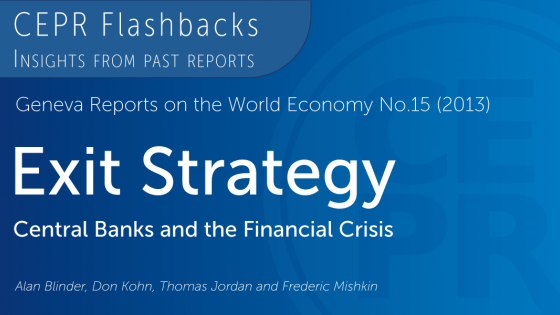With interest rates stuck at or near the zero lower bound, central banks around the world turned to policies that used central bank balance sheets to conduct ‘unconventional’ monetary policy – much of it focused on a massive expansion of liquidity. But do we revert to normality when it’s all over, and what will that 'normal' be? This was the subject of Exit Strategy, CEPR and ICMB's report of the 15th Geneva Conference on the World Economy, which took place in Geneva on 3 May 2013.
The report asks three important questions about what it calls "a complex and untested process", which have only become more pressing since then. Will we return to the old status quo and, if not, what will have changed? How do we get from where we are today to the next stage? And what will central banks look like in the future?
Written by Alan Blinder, Thomas Jordan, Donald Kohn and Frederic Mishkin, the report also summarises papers by the present and past central bankers, financial market participants and academics who attended the Geneva conference in 2013.
The authors warn that the exit will be "fraught with difficulties, if not dangers". The report analyses the processes of raising interest rates and shrinking balance sheets, while ensuring financial stability during the exit. It asks whether flexible inflation targeting will remain the preferred strategy for central bankers, and how central banks will remain independent in a world where their expanded responsibilities do not end with the conduct of macroprudential policy.
As the report says:
"[Central bank] mandates have changed; they now include new responsibilities for financial stability. This new situation is far from innocuous. Central banks will have to wade into troubled waters, including redistributive policies and quasi-fiscal operations. This may well test their independence, which is so crucial for the conduct of classic monetary policy."
References
Blinder, Alan, Thomas Jordan, Donald Kohn and Frederic Mishkin, 2013. Exit Strategy, the 15th Geneva Report on the World Economy, CEPR London.




